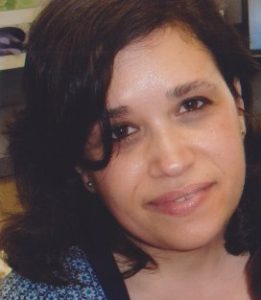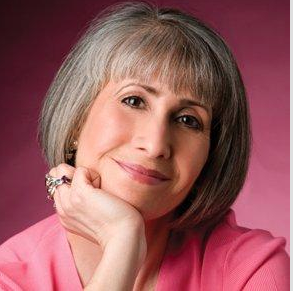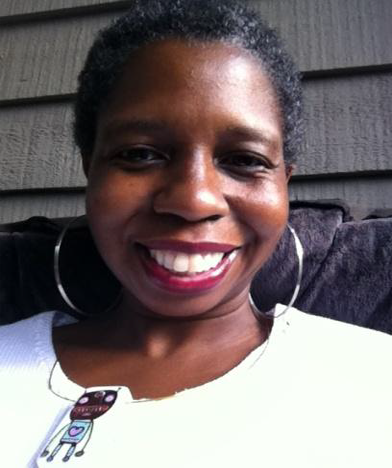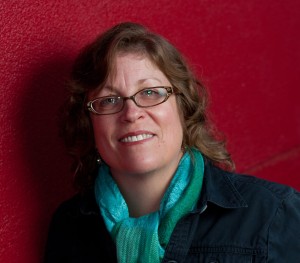Autism Awareness Month
An Interview with Debra Hosseini on her book – The Art of Autism: Shifting Perceptions
By Amy Wall Lerman
 Last year, I came across a book called Artism: The Art of Autism: Shattering Myths about Those Living on the Spectrum by Debra Hosseini – an eye-opening collection of work by artists on “the spectrum.” The featured artists run the gamut of ages and degrees of Autism Spectrum Disorder (ASD) – but the one thing they share in this book, beside an autism label, is a voice. For those on the spectrum developing the ability to socialize, to connect, and to communicate, are milestones, so it is wonderful to see so much passion and expression revealed in this inspirational book.
Last year, I came across a book called Artism: The Art of Autism: Shattering Myths about Those Living on the Spectrum by Debra Hosseini – an eye-opening collection of work by artists on “the spectrum.” The featured artists run the gamut of ages and degrees of Autism Spectrum Disorder (ASD) – but the one thing they share in this book, beside an autism label, is a voice. For those on the spectrum developing the ability to socialize, to connect, and to communicate, are milestones, so it is wonderful to see so much passion and expression revealed in this inspirational book.
Now, just in time for Autism Awareness Month, Ms. Hosseini has come forth with another book (a kind of part 2 in the Artism series) called The Art of Autism: Shifting Perceptions. Ms. Hosseini is one of many parents and advocates working to bring the inner workings of autism out into the open. Inspired by her 16-year-old son, Kevin, one
of the artists featured in the books, and assisted by other parents and advocates, Ms. Hosseini’s books give us a treat by inviting us to look inside the autistic mind – reminding us that there is a big, beautiful world in there and that labels are meaningless.
 I recently had an opportunity to interview Ms. Hosseini about her latest book and how she hopes to bring about change through awareness:
I recently had an opportunity to interview Ms. Hosseini about her latest book and how she hopes to bring about change through awareness:
EDITOR: How were the artists and artwork selected for this collection? Did the artists create the work for the book or was their work selected from their collection(s)?
HOSSEINI: Artists submitted various pieces and I decided those that fit best into the themes. As with the first book, The Art of Autism: Shattering Myths, this new book, The Art of Autism: Shifting Perceptions, became theme-oriented in an organic process as I compiled the art.
EDITOR: How do the artists/writers/poets feel to be part of such a collaboration?
HOSSEINI: I can’t speak for them. I’ve received a lot of positive feedback. It’s not only about the book – it’s about a business venture, events, book signings, art exhibits, film festivals, workshops, and creating community. We say it’s a movement to shift consciousness about autism.
EDITOR: As we know, there are varying degrees of autism – were most of the artists featured in the book considered high-functioning or were there more severely affected artists in the book?
HOSSEINI: The artists are all over the board as far as verbal ability. We have many nonverbal poets and artists. Some use facilitated communication with a facilitator who places their hand on the person’s arm or hand to communicate. Ricky Nesbitt, an artist in the book, doesn’t speak at all, but communicates through his photography and art, which he didn’t start until he was in his thirties. His sister, Kristen, says his art gives her an insight into his mind and heart.
EDITOR: For those of us who have family members with autism, this book is particularly moving. We spend so much time trying to imagine what life inside the mind of our loved one feels like, so to get this kind of insight is both gut-wrenching and soothing. What do you hope that people familiar with autism will take away from this book?
HOSSEINI: Thank you for that. The first thing I hope they take away from the book is the power of connections. All of the people in the book have connected somehow. At a more local level, a central theme in the book is the importance of families and having faith in your child. At some point, all the families seem to have made a transition from initial feelings of loss and grief to acceptance. They followed their children’s lead and opened up opportunities for art, poetry, and other modes of expression. I can’t emphasize how important it is to see a child’s strengths. Our society focuses so much on the deficits that the child is often lost in the label. The book shows how these people have emerged into creativity.
EDITOR: What about people unfamiliar with autism – how do you think they will respond to this book? How do you hope they will respond to this book?
HOSSEINI: I received much positive feedback from the first book. One person told me they read the first book from front to back and their ideas of autism changed dramatically. I hope readers will see that people on the spectrum are unique and that the label doesn’t define them. I also hope they will see the importance of a community and that art programs for children.
EDITOR: While mainstream media, prefers to focus on the savant(s) in our society, most autistic people are not “savants” so how do you feel the media interpretations hurt (or help) the perception of autism?
HOSSEINI: That’s a great question. There are only a few registered savants in my book. Most people on the spectrum have strengths that are developed because of the time spent developing their techniques and skills. While most teens and young adults spend a lot of time socializing, those with autism spend a lot of time on interventions and their focused interests. I believe we are seeing that because they can focus for such a long time, if their focus is channeled in creative pursuits, they develop techniques and skills at young ages that neuro-typical (“normal”) individuals may take years to develop. This is part of the gift of autism.
EDITOR: How can parents recognize and, assist with the development of qualities that make their children special?
HOSSEINI: The more parents expose their children to different creative forms – dance, music, art, poetry, science, etc. the more likely they are to discover child has unique gifts. Many with autism have great spatial awareness and color sense which is why you see them gravitate to art.
 EDITOR: Many parents spend a lot of time trying hoping and working to “cure” their autistic children – seeing autism as a disease versus a possible asset. What do you have to say to parents who fear that being different is a deficit?
EDITOR: Many parents spend a lot of time trying hoping and working to “cure” their autistic children – seeing autism as a disease versus a possible asset. What do you have to say to parents who fear that being different is a deficit?
HOSSEINI: I spent a lot of time in interventions when my child was young. I feel that those interventions were necessary and helped him tremendously. We worked with UCSB Autism Center with a child-focused type of therapy called PRT. The parent follows the child’s lead. Kevin was introduced to art by one of the UCSB therapists, Colin Zimbleman, who now has a PhD and is a contributor to the book.
I think the emphasis on curing children is unhealthy. I feel that children internalize the negative messages they hear from others and the media. We must not see our children as things that are broken and need to be fixed. We must see them as unique individuals who we can help blossom.
EDITOR: It is interesting that you emphasize the theme of “connection” in this book when so much emphasis with autism is put on disconnection. Is there a reason for this? What motivated you to take the book in this particular direction?
HOSSEINI: That’s an astute question. I think the theme of connection is about the web of life. Facebook is an example of the power of connection and how people can come together in alignment to shift consciousness about certain issues. For example, I belong to a lot of like-minded groups on Facebook, such as The Autism Highway, The Gifts of Autism, ANCA, The Autism Shift, Autism Brainstorm, etc. When we unite, we create a powerful force!
 I’ve seen much beauty in art exhibits when parents, therapists, relatives, teachers, and the artists come together and make connections. An example of this is a young California artist in the book, Dani Bowman, who is working with Justin Canha, an artist from New Jersey, the first week of April. They connected through our collaborative. Justin flew out to work on his animations and story boards with Dani. Dani Bowman, at age eleven, created Powerlight Studios, an animation company. She has been at our events speaking about autism, and signing her anti-bullying books. The connections fill in where elements of an autistic person’s may be missing. Connections allow for wholeness.
I’ve seen much beauty in art exhibits when parents, therapists, relatives, teachers, and the artists come together and make connections. An example of this is a young California artist in the book, Dani Bowman, who is working with Justin Canha, an artist from New Jersey, the first week of April. They connected through our collaborative. Justin flew out to work on his animations and story boards with Dani. Dani Bowman, at age eleven, created Powerlight Studios, an animation company. She has been at our events speaking about autism, and signing her anti-bullying books. The connections fill in where elements of an autistic person’s may be missing. Connections allow for wholeness.
I also believe that we are creating our tribe in support of those on the spectrum. It does take a village.
 EDITOR: I am very interested in the work of those diagnosed with Asperger’s Syndrome later in life and excited to see them included in your book. How did their perception of themselves after diagnosis change them? Were any of them already drawing/painting or writing before their diagnosis? If so, how did the diagnosis change their work? If they picked up art/writing after the diagnosis, why do you suppose that is?
EDITOR: I am very interested in the work of those diagnosed with Asperger’s Syndrome later in life and excited to see them included in your book. How did their perception of themselves after diagnosis change them? Were any of them already drawing/painting or writing before their diagnosis? If so, how did the diagnosis change their work? If they picked up art/writing after the diagnosis, why do you suppose that is?
Another theme of the book is the power of a late diagnosis. Many people with Asperger’s in the book received the diagnosis in their twenties and beyond, after many years of being mislabeled. With the Asperger’s diagnosis, these individuals consistently express a sense of relief and an empowerment. As one of the artists stated, he felt no longer crazy or alone. Most of them had already been developing their drawing, painting or writing. I don’t see many who picked it up after their diagnosis. It seems the people with Asperger’s always know they are ‘creative’ types. Those in the book seem to know what their passion is, though many have not fit into traditional types of employment.
EDITOR: Do have any expectation that your book will help change the perception that non-autistic people have of autism and autistic people in general?
HOSSEINI: Oh, yes! That’s why the subtitle is: “Shifting Perceptions.” I think the stories of nonverbal people who learned to communicate at later ages will give teachers, therapists, and others reason to pause and reflect. Those who have been overlooked and unseen are now being ‘seen.’ BIO
BIO
Debra Hosseini is the mom of three children. Her youngest, Kevin, is on the autism spectrum and is one of the artists featured in her latest book. Debra is the co-founder of the Art of Autism collaborative and curates art shows. Her prior book was Artism: The Art of Autism: Shattering Myths about Those Living on the Spectrum. The Art of Autism: Shifting Perceptions takes the reader beyond her first book to explore autism, creativity, family, late diagnosis, and alternate means of communication in much more depth. For more information go to: www.the-art-of-autism.com or visit www.facebook.com/theartofautism.
Tags: Autism, Autistic Kids, Children and Autism, The Art of Autism















